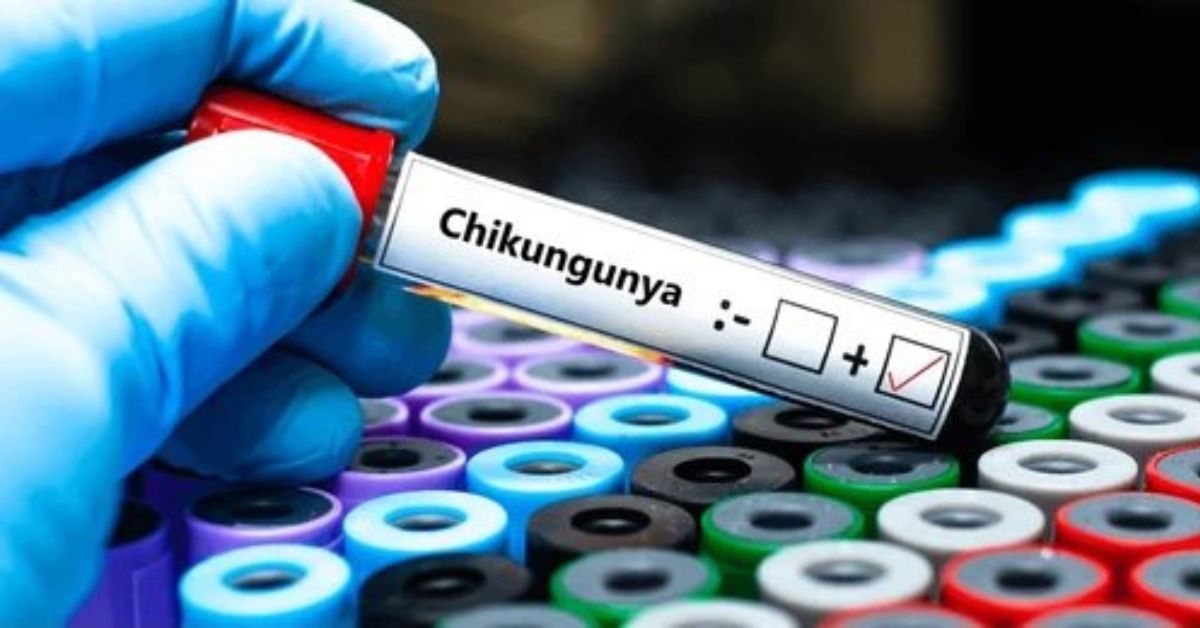Since mid-June 2025, China has been grappling with a significant outbreak of chikungunya, a mosquito-borne viral disease, primarily in Guangdong Province. Over 8,000 cases have been reported, with the city of Foshan as the epicenter, marking the country’s largest outbreak since 2008. The rapid spread has prompted aggressive public health measures, including hospital quarantines and innovative mosquito control strategies. The U.S. Centers for Disease Control and Prevention (CDC) issued a Level 2 travel alert, urging travelers to take enhanced precautions. This article details the outbreak, symptoms, treatment options, and preventive measures to combat chikungunya in China and beyond.
Overview of the Chikungunya Outbreak
Chikungunya, first identified in Tanzania in 1952, is transmitted by Aedes mosquitoes, primarily Aedes aegypti and Aedes albopictus, which also spread dengue and Zika. The name, derived from the Kimakonde language, means “that which bends up,” reflecting the severe joint pain it causes. According to The New York Times, the outbreak in China began with an imported case in Foshan on July 8, 2025, and has since spread to 13 cities in Guangdong, including Guangzhou, Shenzhen, and Dongguan, with nearly 3,000 new cases reported in the last week of July alone.
The outbreak has also reached neighboring regions, with cases reported in Hunan Province, Hong Kong, and Macau. Hong Kong confirmed its first case on August 3, involving a 12-year-old boy who traveled to Foshan, per BBC. Globally, the European Centre for Disease Prevention and Control reported 240,000 chikungunya cases and 90 deaths in 2025, with South America, particularly Brazil, heavily affected.
Symptoms of Chikungunya
Chikungunya symptoms typically appear 3 to 7 days after a bite from an infected mosquito. While most cases are mild and resolve within a week, some patients experience prolonged symptoms. According to the World Health Organization (WHO), the virus is not contagious between humans but spreads when mosquitoes bite infected individuals and then healthy ones.
Common symptoms include:
- High fever (often above 39°C or 102°F)
- Severe joint pain, which may persist for months or years
- Muscle pain
- Headache
- Rash
- Joint swelling
- Nausea and fatigue
Severe cases are rare but can lead to complications like neurological, heart, or eye issues, particularly in newborns, older adults (65+), and those with conditions like diabetes or heart disease. The mortality rate is low, approximately 1 in 1,000, per Wikipedia.
Treatment Options for Chikungunya
There is no specific antiviral treatment for chikungunya, so medical care focuses on symptom management. According to the WHO, most patients recover within a week, but joint pain can linger, sometimes for years, especially in severe cases.
Treatment strategies include:
- Pain Relief: Over-the-counter medications like paracetamol or acetaminophen to reduce fever and joint pain.
- Hydration: Ensuring adequate fluid intake to combat fever-related dehydration.
- Rest: Allowing the body time to recover from the acute phase of illness.
- Avoiding Mosquito Bites: Infected patients should use mosquito nets or repellents to prevent further transmission.
In Foshan, authorities have designated dozens of hospitals as treatment centers, equipping over 7,000 mosquito-proof isolation beds for infected patients, per TIME. Patients are typically quarantined for seven days or until they test negative, a measure reminiscent of COVID-19 protocols.
Preventive Measures and Vaccinations
Prevention is critical, as chikungunya has no widely available cure. The CDC and Chinese health authorities emphasize reducing mosquito breeding and protecting against bites. In Guangdong, officials have implemented stringent measures, including fines up to 10,000 yuan ($1,400) for households failing to eliminate stagnant water, a breeding ground for Aedes mosquitoes, per The New York Times.
Key preventive measures include:
- Eliminate Stagnant Water: Clear water from flowerpots, gutters, birdbaths, and pet bowls to prevent mosquito breeding.
- Use Insect Repellent: Apply EPA-registered repellents containing DEET, picaridin, or IR3535 on exposed skin.
- Wear Protective Clothing: Long sleeves and pants to minimize skin exposure, especially during daytime when Aedes mosquitoes are active.
- Install Screens and Nets: Use window screens, air-conditioned accommodations, or mosquito nets over beds.
- Community Efforts: Participate in local campaigns to clean rooftops, courtyards, and public spaces.
Two vaccines are approved in the United States: IXCHIQ (live-attenuated, for adults 18+) and VIMKUNYA (virus-like particle, for ages 12+), per the CDC. Vaccination is recommended for travelers to outbreak areas, though not for those over 65 in some regions due to safety concerns, per ABC News. Pregnant travelers, especially near delivery, are advised to reconsider travel, as vertical transmission to newborns is possible.
China’s Response to the Outbreak
Chinese authorities have adopted a multifaceted approach to control the outbreak, drawing on strategies used during the COVID-19 pandemic. In Foshan, a city of 9 million, officials have upgraded the public health emergency response to Level III, indicating a significant event, per the South China Morning Post. Measures include:
- Mass Insecticide Spraying: Soldiers and workers fog parks, streets, and neighborhoods with insecticide.
- Drone Surveillance: Drones identify mosquito breeding sites in hard-to-reach areas.
- Biological Controls: Release of “elephant mosquitoes” (whose larvae eat Aedes larvae) and mosquito-eating fish in ponds.
- Door-to-Door Inspections: Community workers check homes for stagnant water, with non-compliance leading to fines or, in rare cases, criminal charges.
- Hospital Quarantines: Infected patients are isolated in mosquito-proof wards to prevent further transmission.
These efforts, while effective, have raised concerns among some residents, with reports of electricity cutoffs for non-compliant households in Foshan’s Guicheng district, per The New York Times. Guangdong’s governor, Wang Weizhong, has urged officials to mobilize communities to install window screens, light mosquito coils, and use nets, per Xinhua.
Global Context and Climate Impact
The 2025 outbreak in China is part of a global surge, with 240,000 cases and 90 deaths reported across 16 countries, per the European Centre for Disease Prevention and Control. Major outbreaks have occurred in Brazil, La Reunion, and Sri Lanka, with imported cases reported in France (800) and Italy (2), per Euronews. The WHO warned in July 2025 of a potential global epidemic, citing climate change as a factor. Warmer, wetter conditions have expanded mosquito habitats, increasing transmission risks, per E&E News.
In the U.S., locally acquired cases were last reported in 2019, but 199 travel-associated cases were recorded in 2024, with 46 in 2025, per Forbes. The CDC’s Level 2 alert advises travelers to Guangdong to take precautions, with similar warnings for Bolivia, Kenya, and Mauritius.
Challenges and Public Sentiment
The outbreak has strained Foshan’s healthcare system, with hospitals managing thousands of mild cases. Public sentiment, as seen on Chinese social media like Weibo, reflects concern about the virus’s painful symptoms, with one user noting, “The prolonged consequences sound very painful,” per BBC. Some residents have criticized the strict measures, comparing them to COVID-19 restrictions, per The New York Times.
Challenges include:
- Healthcare Capacity: Managing thousands of patients in mosquito-proof wards.
- Public Compliance: Resistance to fines and inspections in some communities.
- Climate Impact: Rising temperatures complicating mosquito control efforts.
- Limited Treatment: Lack of specific antiviral drugs, relying on symptom management.
Future OutlookChinese authorities are committed to containing the outbreak through continued surveillance and vector control. The CDC and WHO recommend ongoing monitoring, as imported cases could spread the virus to new regions. Vaccination and mosquito prevention remain critical, especially for travelers. Liu Qiyong, a Chinese CDC expert, noted that global virus spread increases the risk of imported cases, per Hindustan Times.
Conclusion
Since mid-June 2025, China has reported over 8,000 chikungunya cases, primarily in Foshan, Guangdong Province, marking its largest outbreak since 2008. Transmitted by Aedes mosquitoes, the virus causes fever, severe joint pain, and other symptoms, with no specific antiviral treatment. Management focuses on pain relief and hydration, while prevention includes eliminating stagnant water, using repellents, and vaccination for travelers (IXCHIQ and VIMKUNYA). Authorities have deployed insecticide spraying, drones, “elephant mosquitoes,” and fish to control mosquitoes, alongside hospital quarantines. The CDC issued a Level 2 travel alert, urging precautions. The outbreak, linked to climate-driven mosquito proliferation, has spread to 13 Guangdong cities, Hong Kong, and Macau, with global cases reaching 240,000 in 2025.
Sources & References:
- The New York Times
- BBC
- TIME
- The Guardian
- Reuters
- Forbes
- ABC News
- Euronews
- South China Morning Post
- Hindustan Times
- Al Jazeera
- NBC News
- USA Today
- Wikipedia
- E&E News
Author
-

Tyler Grayson brings global events to your screen with clarity, depth, and context. With a background in political science and international relations, Tyler covers diplomacy, global conflicts, climate issues, and major policy shifts with a balanced, facts-first approach. His reporting connects the dots between headlines and their real-world impact.






